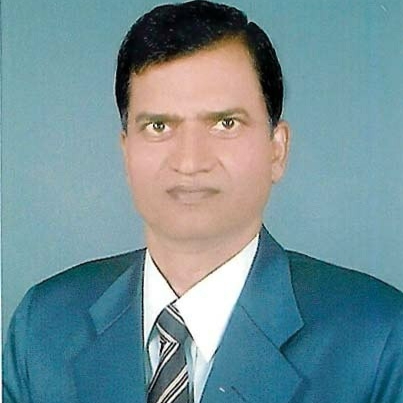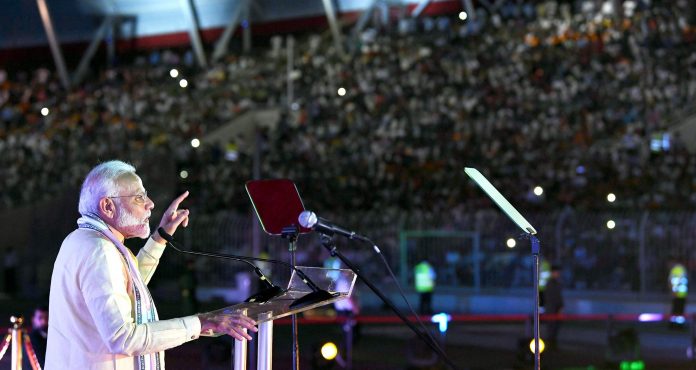The election results of 16th and 17th Loksabha, held in 2014 and 2019 in which the Bharatiya Janata Party got a thumping majority with a different vision, manifesto and determination, clearly indicated the changing mood of Indian masses and the shifting of political culture as well. The new Indian set-up appeared to have overlooked the views and expressions on secularism as narrated by Dr. B.R. Ambedkar, Dr. S. Radhakrishnan and Vivekananda. Although in India no one can deny the importance of religion in personal and social life. Religion is the major concern of man. Man is always having religious quest which makes him able to become a restless creature even beyond the satisfaction of his physical needs. Religion revolves around man’s faith in the supernatural forces. This is why the President Radhakrishnan quotes the significance of secularism in the following words, “When India is said to be a secular state, it does not mean that we reject the reality of an unseen spirit or the relevance of religion to life or that we exalt irreligion. It does not mean that secularism itself becomes a position religion or that the state assumes divine prerogatives.”
Background of religion in India
Although faith in the supreme is the basic principle of the Indian tradition, the Indian state will not identify itself with or be controlled by any particular religion. India has adopted the concept of positive secularism and composite Indian culture that permit differences but eliminate divisiveness and bring about a harmony of unity in diversity. When positive secularism accompanies the practice of multiple religions, it is bound to be helpful in promoting national integration and communal harmony.
In pre and post – independence periods the concepts of secularism and religious freedom remained significant in the minds of public as well as leaders. Among leaders there are many who belonged to the Indian National Congress (INC), such as Mahatma Gandhi, Jawaharlal Nehru, Maulana Abul Kalam Azad, B.R. Ambedkar, staunch supporters of “Hindu Rashtra”- M.S. Golwalkar, Veer Savarkar and a host of others. Earlier in the Nehru Report of 1928 the right to freedom of conscience, profession and practice of religion was included explicitly to prevent one community domineering over another. In its original conception secularism meant anti-theism, but not atheism; it was philosophically a movement intentionally ethical, negatively religious. It introduces science, technology and rationalism in the society and forms the basis of a modern secular state. In the process it has to oppose and struggle against the clergy and vested forces in the society. And as such, the fundamentalist communal onslaughts are the ‘other’ of secularism and secularization. The Indian leaders during the freedom struggle and thereafter made secularism the mantra of the Indian nation, though each expressed their concerned views in different manners, representing the aspirations of the different sections of society. Especially Gandhi and Nehru with others preferred to keep India secular in the sense that Indian state will have no religion though people of India will be free both in individual and corporate sense to follow any religion of their birth or adoption. Secularism in India meant equal respect for all religions and cultures and non-interference of religion in government affairs. The paper aims to go through the different shades of Indian secularism as found in Indian Constitution and the public as well. Transitional phase of socio-political phenomenon and diversities in social set up have made the situation complex and challenging in this fast-changing global scenario of which India is an integral part.
Hindu-Oriented Views
In a multi-religious society if politics is not based on issues but on identities, it can prove highly divisive. The medieval society in India had religious tolerance as it was non-competitive. The modern Indian society has proved to be more divisive as it is based on competition. It is being a mixture of religion, is always prove to dominance and conflict. Around the independence and even before the supporters of Hinduism and Hindutva the RSS/VHP/BJP sought the formation of a “Hindu Rashtra” whose initial exponents include V.D. Savarkar, M.S. Golwalkar, Deen Dayal Upadhyaya and others who followed the principle and line of action. They wanted to construct independent India on the basis of the religious denomination of its people. This vision had a twin expression. One was the demand for a “Hindu Rashtra” advanced by the RSS and other for the creation of an Islamic state advanced by the Muslim League. While the latter achieved its objective through the cruel partition of our country, the former vision was rejected by a majority of Indians. Savarkar, in his Presidential address to the Hindu Mahasabha in 1938 said; India can not be assumed today to be unitarian and homogeneous nation, but on the contrary there are two nations in the main, the Hindus and the Muslims. Thus in pre-independence period the three visions of what should constitute independent India were voiced by Hindu Mahasabha, Muslim League and the Indian National Congress in which the last favoured India to be a democratic secular Republic. In the freedom struggle while the Hindu Mahasabha and Muslim League remained poles apart, the INC continued adhere its secular image and spirit.
Violent thoughts of Hinduism
Thus in opposition to Mahatma Gandhi’s tolerant Hindusim was Savarkar’s violent Hinduism and they both represented alternative concepts of Hinduism and the Indian nation. Both Veer Savarkar and M.S. Golwalker wanted India to be a sovereign Hindu State. Perhaps for the first time in 1923 Savarkar propounded the two nation theory in his essay Hindutva, ‘We Hindus are bound together – by the tie of the common homage we pay to our great civilization – our Hindu culture —-We are one because we are a nation, a race and own a common sanskriti or civilization.” Further he reiterated his view in 1937 and 1938 where he decrised that we Hindus are a nation by ourselves because religious, racial cultural and historical affinities bind us intimately into a homogeneous nation. The same sentiment was expressed by Golwalkar in his Bunch of Thoughts. It is the concept of cultural nationalism as opposed to territorial nationalism. He, in his treatise, We or Our Nationhood Defined pleaded that non-Hindus in Hindustan must either adopt the Hindu culture and language, must learn to respect and hold in reverence Hindu religion, must entertain no idea but those of the glorification of the Hindu race and culture, that is, of the Hindu nation and must lose their separate existence to merge in the Hindu nation, claiming nothing, deserving no privileges, far less any preferential treatment not even citizen’s rights. However, the views and visions made public by Savarkar, Golwalkar and others did not find much appreciation at the time, but it proved an asset for future politicians of the country whosoever may be. In fact we need religious value in politics as Gandhi said but certainly not politicization of religion. A state should never priorities one religion over the other, particularly in a secular country like India. India is a secular country as per the declaration in the Preamble to the Indian Constitution made at the time of independence and implemented on 26 January 1950.
Changing Signs of Political Culture
The decades of 1980s and 1990s have witnessed violent secessionist movements in Punjab and Kashmir and an upsurge in the use of religious symbols and terminology in politics. There onwards, secularism has been challenged by the ascendance of the forces of communalism, fundamentalism and religious revivalism, accompanied by violence. Communal riots continue unabated. Meerut, Bombay, Bhiwandi, Ahmedabad, Surat and Hyderabad and most recently, Gujrat, are just a few cases in point. The ostensible reason for this fury was the burning of a train coach that was carrying Hindu pilgrims returning from Ayodhya. Fifty nine people including women and children died in the fire. But the post-Godhra incidents in 2002 communal riots accompanied by events of arson, loot, and murder in urban as well as rural Gujrat and rural areas of Haryana and Maharashtra have tarnished the image of Indian secularism and the reputation of Hinduism as a tolerant faith. The social climate is thoroughly vitiated and the atmosphere is surcharged with suspicion and hatred reminding of the pre-partition days. This marked the first time when the state has emerged as a major player and actor in violence by mobs, a qualitative change from previous such situations in India. As a climax in May 2002, in a conference at Bangalore the RSS passed a resolution that the security of the minority community depends on the goodwill of the majority. The resolution was seen as an open threat to the minority.
The views and opinions expressed in this article are those of the author and do not necessarily reflect the official policy or position of The Geopolitics.

Dr. Rajkumar Singh is a University Professor for the last 20 years and presently Head of the Postgraduate Department of Political Science, B.N.Mandal University, West Campus, P.G. Centre, Saharsa (Bihar), India. In addition to 17 books published so far there are over 250 articles to his credit out of which above 100 are from 30 foreign countries. His recent published books include Transformation of modern Pak Society-Foundation, Militarisation, Islamisation and Terrorism (Germany, 2017), and New Surroundings of Pak Nuclear Bomb (Mauritius, 2018). He is an authority on Indian Politics and its relations with foreign countries.


